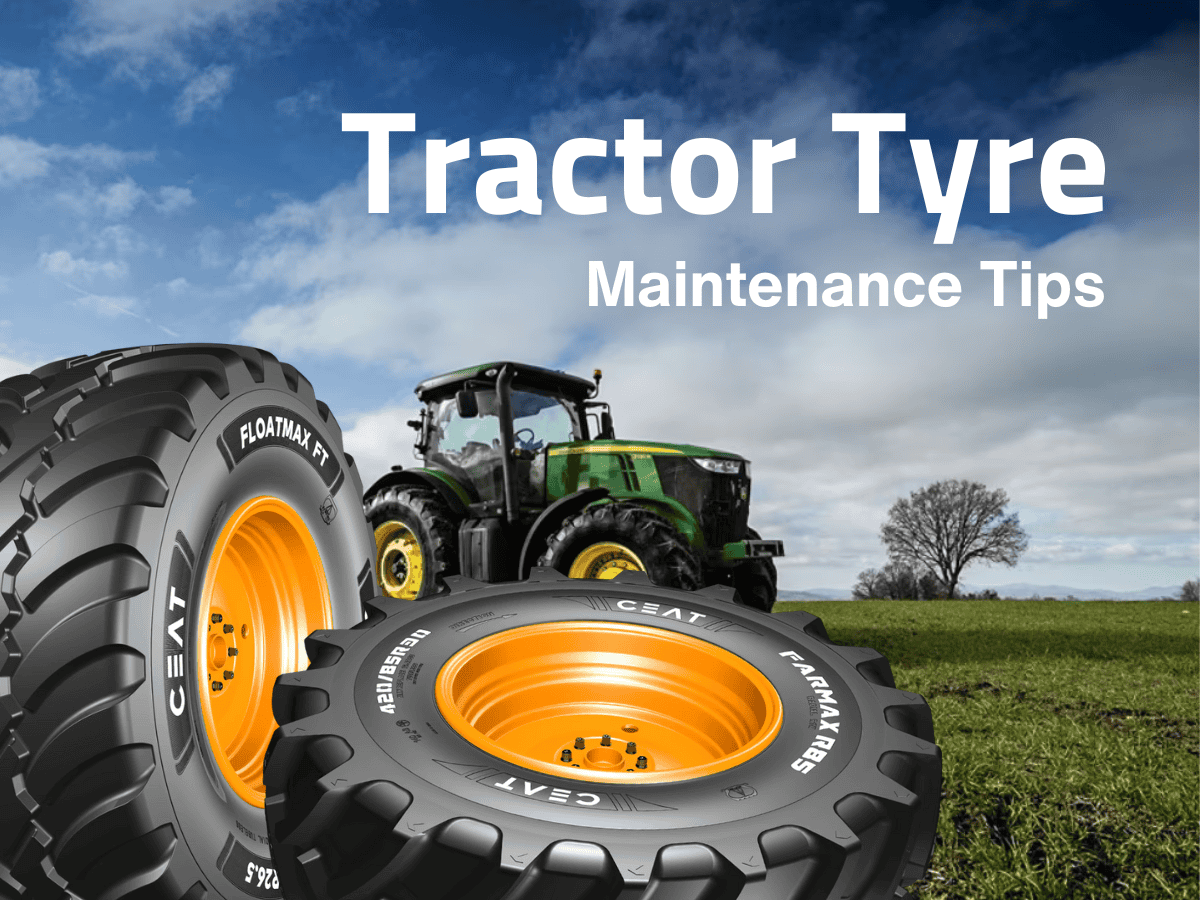ceat-speciality:blogs-tags/all,ceat-speciality:blogs-tags/tyre-care
Five essential keys for better management of tractor tyres
Mon, 31 Jan 2022 | PRODUCTS
Once you have sourced new tractor tyres, perhaps by searching the internet for ‘tractor tyres for sale’ or ‘tractor tyres near me’, or checking tractor tyre price lists, you will have made a significant investment in your machine. Careful management will ensure you get the maximum return from it. Here are five tips to help.
1. Add ballast weights when needed – and remove them when they’re not
For tractors performing primary cultivation tasks direct onto stubbles – ploughing, one-pass cultivating or subsoiling, for example –tyre slippage and fuel use will be minimised and traction maximised if the tractor is properly ballasted. This should be done considering the weight of the implement and the forces imposed on the tractor tyres when the tractor/implement combination is at work.But it is also essential to ensure that front-end and wheel weights are removed when not required. Removal will minimise soil damage when performing lighter field tasks and –on the front tractor tyres in particular – keep wear rates down when on the road.
2. Fix a regular time to make pressure checks and damage assessments
Ensuring your tractor’s tyres are operating at the correct pressures is vital for safety and performance reasons, but it also helps to manage your tractor tyres for maximum lifespan. With the fickle nature of the farming seasons and some tractors’ workloads, it’s not always easy to remember to check your tractor’s tyre pressures regularly. To ensure it gets done, try to keep to a routine that includes tractor tyre pressure checks at fixed intervals so that you can address low pressures before they can cause a problem. Also, check of the inside, outside and circumference of each tractor tyre for damage.
3. Keep an eye on wear rates
Assessing your tractor’s tyres for wear rates at regular, fixed intervals is another element of good management practice, so try to ensure it is done on a routine, recordable basis. Assessment of the tread can help you plan and budget better for your next set of tractor tyres. If wear rates are higher than expected, try to ascertain the cause. It is worth checking that your tractor tyres are not inflated above the recommended pressures.
4. Try to maintain good road travel practice
Good management also extends to assessing your driving style and, if you are not the only driver, will help you to advise your operators on best driving practices. This particularly applies if your tractor does a lot of road work.It may be the case that some minor improvements to driving techniques, such as ensuring braking for junctions and roundabouts is carried out smoothly in plenty of time, can help minimise wear from road travel.
5. Maintain your farm tracks where possible
There is little you can do about the state of the roads on which you travel with your tractor, and in the field tractor tyres must work in often challenging conditions, from hard, dry ground to very stony or flinty soils. If your tractor must travel between your fields on farm tracks, though, this is one area you can potentially address if conditions are challenging and detrimental to tractor tyre wear. Suppose sufficient funds and time are available, investment in repairing potholes and flattening rough. In that case, stony surfaces will be money well spent, as not only will the potential for tyre wear and damage be reduced, but downtime will be minimised, as travel will be smoother and faster.
Follow these five essential keys for better management of tractor tyres, and you will maximise their performance and lifetime. In this way, you will get maximum return on your tractor tyre investment and maximise the intervals before you next find yourself searching the internet for ‘tractor tyres for sale’ or ‘tractor tyres near me’, or checking tractor tyre price lists.




























































































































